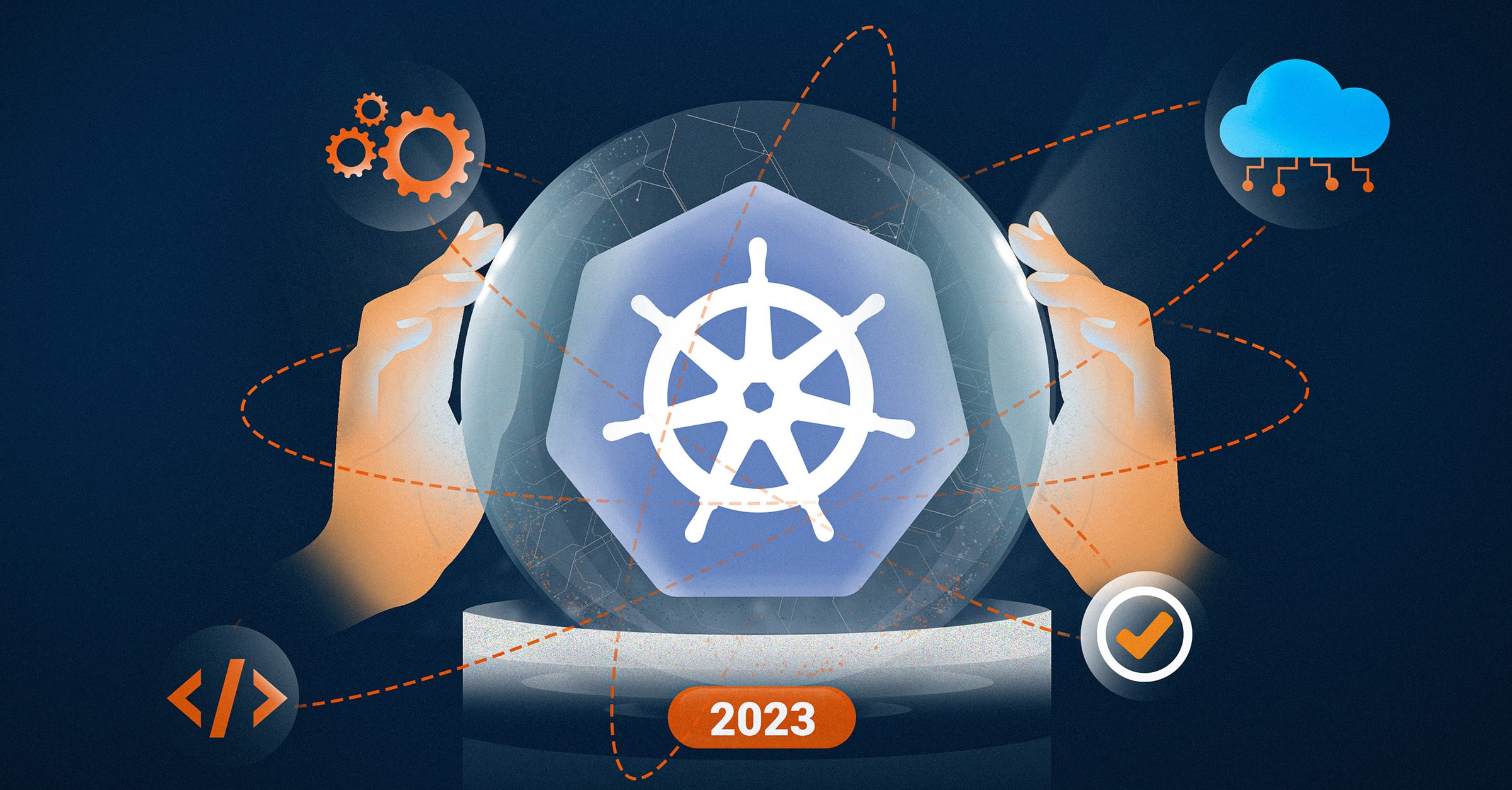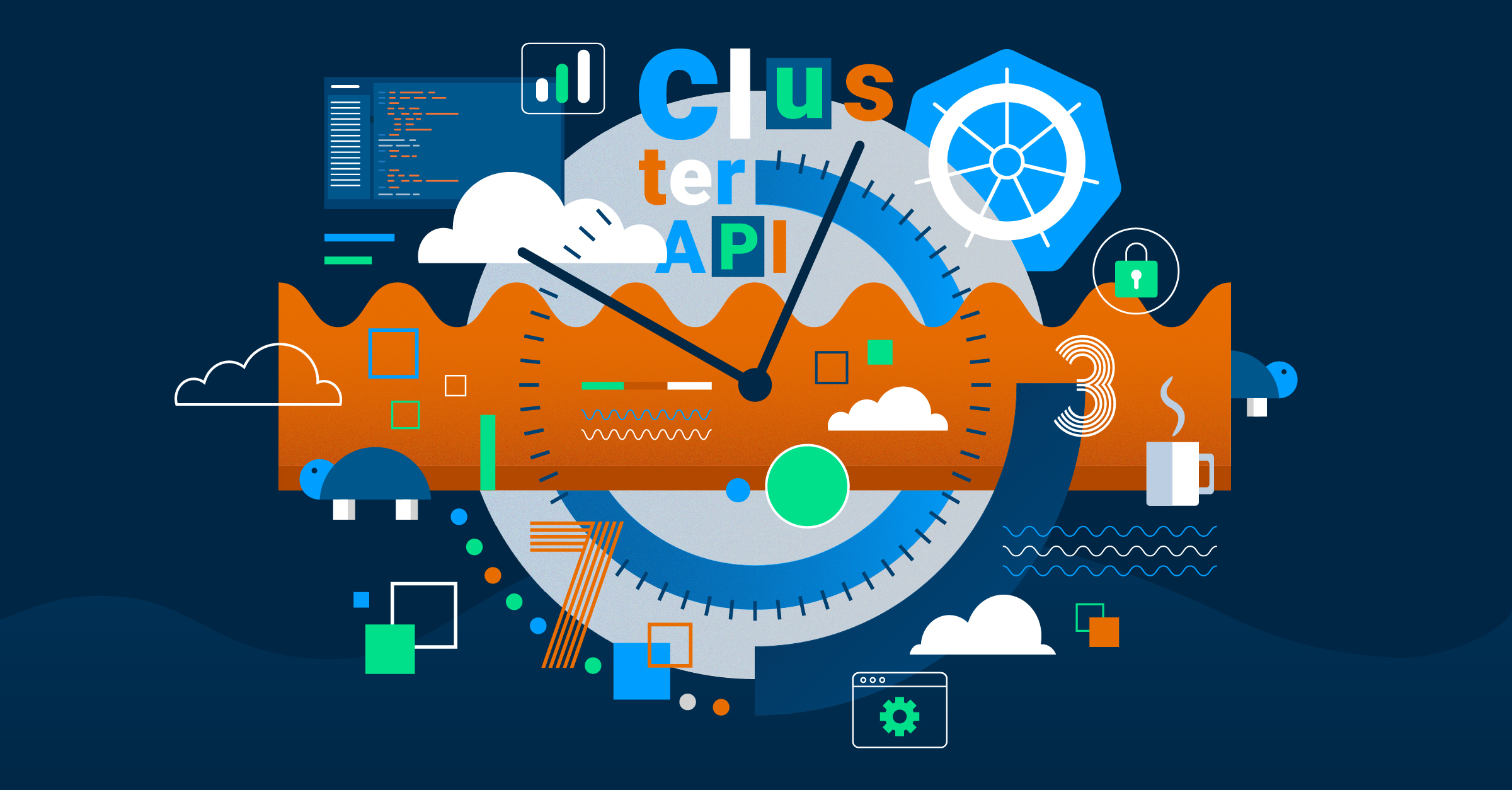Cloud native predictions for 2025
by Oliver Thylmann on Feb 21, 2025

Or better yet, listen to the Giant Conversations predictions episode here!
Writing predictions is an interesting exercise (I've been doing this since 2017). You're trying to spot patterns in the present that hint at what's coming next while also sharing what you've learned from watching the industry evolve. It's part wishlist, part magic, part science. It's not just about being right (though that's always nice); it's about understanding where things are heading and why.
I tried to be bolder with the 2024 forecasts. Sometimes that worked out well, sometimes... less so. You make educated guesses based on what you're seeing, then reality shows you what you missed or what you got right. You just have to wait. So here we go again. First, let's check how our crystal ball performed last year, then we'll take another shot at what 2025 might bring.
2024 predictions in review
1. The 100% club
🔮 Giant Swarm turns 10!
I had to include this one to boost my prediction average. A decade of watching the cloud native landscape evolve gives you perspective on what's next. 😀
🔮 The IDP trend will go full force
This one was clear from watching how organizations actually work with Kubernetes. The surge of companies in this space validates what we've been saying for years: you can't just buy an IDP — you need to develop it over time. That's why open source solutions like Backstage are winning. Organizations are finally moving beyond "here's your Kubernetes cluster" to actually streamlining how developers work.
🔮 Edge clusters gain traction
This prediction came from seeing real industry needs emerge. When you're running a factory where data needs to stay local and response times matter, Kubernetes at the edge isn't just nice to have – it's essential. We're seeing this with our factory customers, where edge computing enables everything from energy cost savings to machine optimization. The ability to maintain consistent development patterns between cloud and edge is making this transition actually feasible.
2. Strong signals
🔮 GitOps becomes the standard
The continuous reconciliation model is driving both GitOps and Crossplane adoption. While there's still plenty of Terraform out there, we saw Crossplane grow significantly last year as an alternative. The key insight? Centrally managed state was always volatile and relied on complex pipelines. With GitOps, you get faster delivery of infrastructure that's continuously kept in line with the source, rather than waiting on the next pipeline run (during which time infrastructure often drifted from the managed state). Companies are realizing they need a Kubernetes Management Platform with full automation, but it's a journey.
🔮 AI Ops emerges
What's a "thing" versus a "thing thing"? Well, AIOps is definitely a thing — we're seeing it work in the background for many organizations, including us. It's particularly valuable for optimizing postmortems and finding patterns across seemingly unrelated incidents. Several startups are emerging in this space, and we're seeing practical applications, particularly for repeatable operations. Give it two years and it'll be essential for specific operational tasks.
3. Mixed results
🔮 CNCF growth
The CNCF made some interesting moves this year in multi-vendor open source. They're getting more selective about projects — archiving eight in 2024 compared to two in 2023. We're seeing teams choose CNCF-backed solutions like Envoy Gateway over vendor-specific options.
🔮 Community forks for open source projects
OpenTofu showed how license changes can spark significant forks, though we saw fewer than expected. The community's response to licensing changes reveals a continued commitment to open source values.
4. Early calls
🔮 Decision making becomes a people topic
This prediction came from seeing how teams approach technical decisions. When everyone has an opinion and input to share (which you actually want!), you need better ways to reach conclusions. We expected to see more development around structured decision-making processes, especially for teams dealing with complex technical choices. The conversation is starting, but 2024 wasn't quite ready for it.
🔮 Companies and projects folding or merging
The acquisition market stayed quieter than expected. We saw some AI pivots, like Acorn and Docker, but most companies adapted rather than consolidated.
Looking ahead: 2025
Based on what we're seeing with customers, our internal discussions, and our Swarmalicious Slack channel (where we track industry news):
🔮 Gateway API adoption
The Gateway API v1.2 release introduced key features: WebSocket support and timeouts. Looking ahead, v1.3 will bring expanded protocol support and improved observability. We're currently analyzing customer scenarios for Gateway API adoption. In some cases, it could even replace traditional API gateways.
🔮 Platform tools evolution
Three key tools are changing how teams work with Kubernetes:
1. Flux for operational consistency through GitOps
2. Headlamp for simplified cluster management
3. Backstage for abstracting away Kubernetes details
This toolset creates a flexible foundation for different developer needs. Some developers want deep control over their infrastructure, while others just want to deploy their code. With this combination of tools, both approaches are possible, letting teams choose their level of abstraction.
🔮 Community evolution
Kubernetes is mature enough now that we're seeing more specialized gatherings emerge. Health tech discussing HIPAA compliance, telco folks working on networking challenges, game developers sharing their requirements. These focused discussions often deliver more value than massive conferences.
🔮 Platform engineering formalization
We need to stop treating platforms as projects and start treating them as products. This means clear frameworks for capabilities and maturity — something we're seeing become crucial as platforms scale.
🔮 AI workload management
Even with optimizations like DeepSeq R1 reducing resource requirements, we still need resources to run AI workloads efficiently. Kubernetes is built for exactly this kind of challenge — expect more tools and patterns to emerge here.
🔮 The efficiency focus
It's not enough to just run on Kubernetes anymore, you need to run efficiently. This means proper auto-scaling, resource optimization, and potentially using AI for performance tuning. We've got customers questioning whether they really need their staging environments running 24/7. The theme for 2025 seems to be practical innovation — moving from "making it work" to "making it work well."
You May Also Like
These Related Stories

Cloud native predictions for 2024
Hard to fathom we’re already a month into 2024! With the new year comes speculation about what’s on the horizon. Peeking around the corner at what’s n …

Cloud native predictions for 2023
This year was impressive, to say the least. I'll touch on some of 2022's achievements when I revisit my previous predictions. However, in a nutshell, …

It's Cluster API time — are you ready?
As some of you might have seen, we’ve been working on and talking about Cluster API a lot lately. I felt like now’s a good time to review what Cluster …